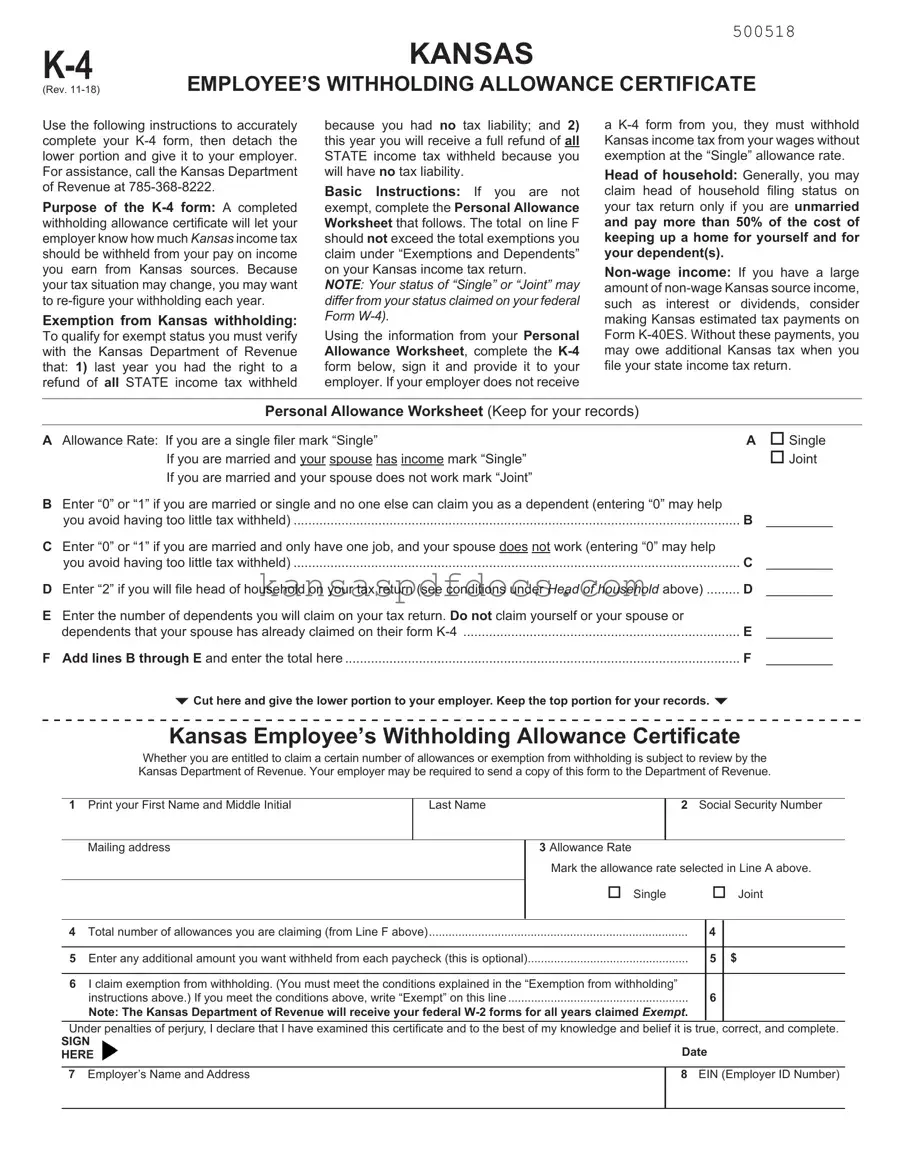The Kansas K-4 form, known as the Employee’s Withholding Allowance Certificate, plays a crucial role in determining how much state income tax is withheld from your paycheck. When you fill out this form, you provide your employer with important information about your tax situation. This includes your filing status, the number of allowances you are claiming, and whether you qualify for exemption from withholding. If you are not exempt, the form guides you through a Personal Allowance Worksheet, helping you calculate the total allowances based on your dependents and marital status. It’s important to keep in mind that if your employer does not receive your completed K-4 form, they will automatically withhold taxes at the “Single” allowance rate, which may not reflect your actual tax situation. Additionally, for those with significant non-wage income, such as dividends or interest, the K-4 form serves as a reminder to consider making estimated tax payments to avoid a tax bill at the end of the year. Understanding and accurately completing the K-4 form can help ensure that you are not over- or under-withheld, allowing you to manage your finances more effectively throughout the year.
